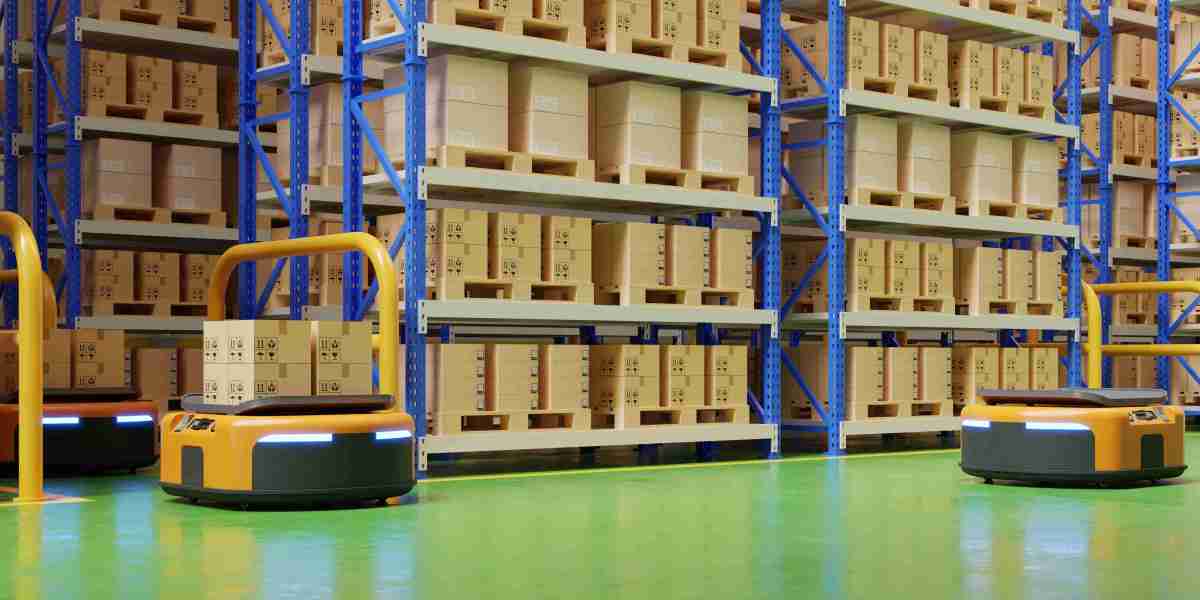The warehouse automation market is currently experiencing a period of rapid expansion and profound transformation. Accelerated by evolving consumer demands, technological breakthroughs, and operational challenges in supply chains worldwide, automation in warehousing has shifted from a niche advantage to a strategic imperative for businesses across industries.
Understanding the current market scenario provides valuable insights into how automation is reshaping warehousing and what the future holds for this critical sector of logistics and supply chain management.
Current Market Landscape
The warehouse automation market has grown significantly over the past decade, driven primarily by the explosive growth of e-commerce and the subsequent need for faster, more accurate fulfillment. According to recent market research, the global warehouse automation market was valued at over USD 20 billion in 2024, with projections suggesting a compound annual growth rate (CAGR) exceeding 14% through the end of the decade.
This growth is being fueled by several key factors:
Surging E-commerce Activity: The pandemic accelerated the shift toward online shopping, forcing warehouses to scale quickly and improve efficiency to handle increased order volumes and tighter delivery schedules.
Labor Market Challenges: With labor shortages, rising wages, and high employee turnover, especially in developed economies, automation offers a solution to maintain productivity without increasing reliance on human labor.
Technological Advancements: Innovations in robotics, artificial intelligence (AI), machine learning, and Internet of Things (IoT) technologies are enabling warehouses to become smarter and more adaptive.
Key Components Shaping the Market
The warehouse automation ecosystem is complex, involving a variety of technologies and solutions that address different operational needs. Some of the most prominent components include:
Automated Storage and Retrieval Systems (AS/RS): These systems improve space utilization and speed up the picking process by automating the storage and retrieval of goods.
Autonomous Mobile Robots (AMRs) and Automated Guided Vehicles (AGVs): These robots transport goods across the warehouse floor, reducing manual labor and increasing throughput.
Robotic Picking and Sorting Systems: Equipped with AI and computer vision, these robots can identify, pick, and sort items with high precision.
Warehouse Management Systems (WMS): Integrated software platforms that orchestrate and optimize automated processes, providing real-time inventory visibility and analytics.
Regional Market Scenario
Different regions are exhibiting varied adoption rates and strategies based on their economic maturity, infrastructure, and industrial focus.
North America: The United States leads with high automation penetration driven by advanced e-commerce operations and large distribution centers. Companies are adopting cutting-edge robotics and AI-driven systems to enhance speed and accuracy.
Europe: Countries like Germany, the UK, and France are focusing on energy-efficient and safety-compliant automation solutions. European warehouses emphasize sustainability alongside productivity.
Asia-Pacific: This region is the fastest-growing market, fueled by rapid industrialization, expanding e-commerce sectors, and government initiatives promoting smart logistics in countries like China, Japan, South Korea, and India.
Latin America and Middle East: These emerging markets are gradually adopting automation, particularly in urban centers and logistics hubs, with increasing interest from retailers and third-party logistics providers.
Market Challenges and Barriers
Despite the optimistic growth scenario, the warehouse automation market faces several challenges:
High Initial Investment: The capital expenditure required for advanced automation solutions remains a significant barrier for small and medium enterprises (SMEs).
System Integration Complexity: Many warehouses operate legacy systems that can be difficult to integrate with new automation technologies, requiring significant customization.
Skilled Workforce Shortage: While automation reduces manual labor needs, it increases demand for skilled technicians and IT professionals capable of maintaining and optimizing automated systems.
Cybersecurity Risks: As warehouses become increasingly connected, protecting systems from cyber threats is critical but challenging.
Emerging Trends Influencing the Market Scenario
Several emerging trends are redefining the warehouse automation market, creating new opportunities and pathways for growth:
Micro-Fulfillment Centers (MFCs): Compact, automated warehouses located near urban centers to facilitate rapid last-mile delivery, catering to the growing demand for same-day shipping.
Robotics-as-a-Service (RaaS): Subscription-based models are enabling companies to access advanced robotics without significant upfront costs, lowering entry barriers.
Sustainable Automation: Increasing focus on reducing environmental impact through energy-efficient equipment, optimized workflows, and smart building designs.
Collaborative Robots (Cobots): Robots designed to work alongside human employees, enhancing flexibility and safety in mixed labor environments.
The Road Ahead: Future Scenario
Looking forward, the warehouse automation market is poised for continued evolution driven by advancements in AI, machine learning, 5G connectivity, and edge computing. These technologies will enable warehouses to operate with greater autonomy, adapt dynamically to changing conditions, and provide predictive insights to optimize supply chains end-to-end.
Additionally, sustainability will become a core consideration, with warehouses increasingly expected to minimize carbon footprints and adhere to stricter environmental regulations.
The competitive landscape will intensify as technology providers, logistics companies, and retailers invest heavily in innovation and partnerships to gain market share.
Conclusion
The current warehouse automation market scenario is one of rapid growth and dynamic change, shaped by technological innovation, shifting labor markets, and evolving customer demands. While challenges such as high costs and integration complexities persist, the overarching trend toward smarter, faster, and more efficient warehouse operations remains unstoppable.




